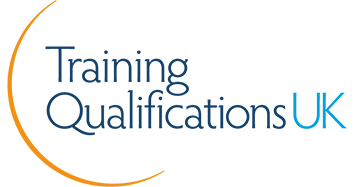Business Economics
 97.5%
97.5%
- SALE Savings End Midnight Tuesday 23rd December
- SALE Savings End Midnight Tuesday 23rd December
Business Economics
Economics is the study of scarcity and the consequences of scarcity. Individuals, households, businesses and nations all experience some level of scarcity, in that they do not possess all the resources to satisfy all their wants and needs. Decisions have to be made to balance those scarce resources in order to improve what can be achieved with them.
Individuals have to decide how to spend their income, household budgets have to be managed, business need to deploy their resources in order to ensure their profitability and governments need to consider the best possible balance of spending to meet the needs of competing groups within society.
Economics is concerned with how these decision are made, with how the resources of a nation or a business are allocated and utilised in the production of goods and services, and with how the rewards of these activities are distributed.
Unit 1: An Introduction to Economics
Introduction
Objectives
Section 1: The Content of Economics
Introduction
1.1 Defining economics
1.2 The fundamental economic problem: scarcity
1.3 The implications of scarcity
1.4 Types of economy
1.5 The general economic questions
1.6 The distinction between microeconomics and macroeconomics
1.7 Positive and normative statements
Summary
Section 2: The Production Possibility Boundary and its Implications
Introduction
2.1 The Production Possibility Boundary (PPB)
Summary
Unit Summary
Recommended reading
Unit 2: The Elementary Theory of Allocation
Introduction
Objectives
Section 1: The Market and the Market Economy
Introduction
1.1 Demand
1.2 Supply
1.3 Price
Summary
Section 2 Elasticity
Introduction
2.1 Price elasticity of demand (PED)
2.2 The income elasticity of demand (YED)
2.3 Cross-elasticity of demand (CED)
2.4 Price-elasticity of supply (PES)
Summary
Section 3: Market Failure
Introduction
3.1 Types of market failure
3.2 Types of government intervention
3.3 Price-regulation (floors and ceilings)
3.4. Taxes and subsidies
3.5 A final note
Summary
Review Activity for Units 1 and 2
Unit summary
Recommended reading
Answer to Unit Review Activity for Units 1 and 2
Unit 3: The Theory of Production
Introduction
Objectives
Section 1: The Production Function
Introduction
1.1 A simple production function
1.2 Short-run and long-run production functions
Review Activity
Summary
Section 2: The Short Run
Introduction
2.1 Output and factor inputs
2.2 The relationship between marginal and average product
2.3 The law of diminishing returns
2.4 The relationship between total, average and marginal product
Review Activity
Summary
Section 3: Costs of production
Introduction
3.1 Total cost of production
3.2 Average total cost of production
3.3 Marginal cost of production
Review Activity
Summary
Section 4: Short-run Cost Curves
Introduction
4.1 Converting output data into cost data
4.2 Total cost and total fixed cost
4.3 Average variable cost and average product of labour
4.4 Combining average variable cost and average fixed cost to calculate average total cost
4.5 The marginal product of labour and marginal cost
4.6 Average total cost and marginal cost
Review Activity
Summary
Section 5: Long-run Cost Curves
Introduction
5.1 Marginal and average cost in the long run
Review Activity
Summary
Unit Review Activity
Unit Summary
Recommended Reading
Answers to Review Activities
Unit 4: Market Structures
Introduction
Objectives
Section 1: The Model of Perfect Competition
Introduction
1.1 Assumptions about the model of perfect competition
1.2 The perfectly competitive firm as a price taker
1.3 What output will the individual firm produce?
1.4 How much profit is made?
1.5 Short-run equilibrium for the perfectly competitive firm
1.6 Long-run equilibrium for the perfectly competitive firm
1.7 The marginal cost curve, short-run supply and the shut-down condition
1.8 The market supply curve and perfect competition
1.9 Perfect competition and efficiency
1.10 Reconsidering long-run equilibrium
Review Activity
Summary
Section 2: Monopoly
Introduction
2.1 Monopoly and revenue curves
2.2 Output and price under monopoly
2.3 How much profit does the monopolist make?
2.4 Sources of monopoly power
2.5 An evaluation of monopoly and perfect competition
2.6 Monopoly and price discrimination
Review Activity
Summary
Section 3: Imperfect Competition
Introduction
3.1 Oligopoly and collusion
3.2 The breakdown of collusion: "to cheat or not to cheat"
Review Activity
Summary
Section 4: Privatisation
Introduction
4.1 The three forms of privatisation
4.2 The objectives of privatisation
Review Activity
Summary
Unit review Activity
Unit Summary
References
Recommended Reading
Answers to Review Activities
Unit 5: The Theory of Distribution
Introduction
Objectives
Section 1: The income factors of production
Introduction
1.1 Distribution of income in perfect markets
1.2 Distribution of income in imperfect markets
Review Activity
Summary
Section 2: Wage determination in perfectly competitive labour markets
Introduction
2.1 The supply of labour
2.2 Elasticity of labour supply
2.3 Economic rent and transfer earnings
2.4 The demand for labour
2.5 Will any workers be employed?
2.6 The determinants of the demand for labour
Review Activity
Summary
Section 3: Wage determination in imperfect labour markets
Introduction
3.1 Monopoly demand for labour
3.2 Monopoly supply of labour
Review Activity
Summary
Section 4: The price of capital
Introduction
4.1 The demand for capital
4.2 Internal rate of return
4.3 Supply of capital
Review activity
Summary
Section 5: The price of land
Introduction
Recommended Reading
Answers to Review Activities
Unit 6: Introduction to the Macroeconomy
Introduction
Unit Objectives
Section 1: National income accounts and measurement of national income
Introduction
1.1 National income accounts
1.2 Measurement of national income
1.3 National income statistics and economic welfare
Review Activity
Summary
Section 2: National income determination and the circular flow of income
Introduction
2.1 Circular flow of income
2.2 Equilibrium national income
Review Activity
Summary
Section 3: Macroeconomic issues and controversies
Introduction
3.1 Macroeconomic issues
3.2 Objectives of government economic policy
3.3 Macroeconomic debate
Review Activity
Summary
Unit Review Activity
Unit Summary
References
Answers to Review Activities
Unit 7: National Income Determination
Introduction
Unit Objectives
Section 1: Basic Keynesian model of national income determination
Introduction
1.1 Components of aggregate demand
1.2 Aggregate demand and equilibrium national income
1.3 The multiplier
Review Activity
Summary
Section 2: Consumption and investment demand
Introduction
2.1 Consumption demand
2.2 Investment demand
Review Activity
Summary
Section 3: Keynesian model and fiscal policy
Introduction
3.1 Keynesian model and unemployment
3.2 Government budget
3.3 Fiscal policy debate
Review Activity
Summary
Section 4: Imports and exports in the Keynesian model
Introduction
4.1 Imports, exports and aggregate demand
Review Activity
Summary
Unit Review Activity
Unit Summary
Recommended Reading
Answers to Review Activities
Unit 8: The Role of Money and the Financial System
Introduction
Objectives
Section 1: Money and the Financial System
Introduction
1.1 Money and the functions of money
1.2 Outline of a financial system
1.3 A model of credit creation
1.4 The financial system
1.5 The London money market
1.6 The money supply
Review Activity
Summary
Section 2: Money Demand, Aggregate Demand and Money Market Equilibrium
Introduction
2.1 Theories of the demand for money
2.2 Money market equilibrium and aggregate demand
2.3 Theories of inflation
Review Activity
Summary
Section 3: Monetary Policy
Introduction
3.1 Monetary control techniques
3.2 Interest rate control
3.3 Problems of monetary control
3.4 The monetarist experiment
Review Activity
Summary
Unit Review Activity
Unit Summary
References
Recommended Reading
Answers to Review Activities
Unit 9: National Income Determination and Aggregate Supply
Introduction
Unit Objectives
Section 1: Theories of aggregate supply
Introduction
1.1 Classical theory of aggregate supply
1.2 Keynesian theory of aggregate supply
Review Activity
Summary
Section 2: Short-run and long-run aggregate supply
Introduction
2.1 Short-run aggregate supply
2.2 Long-run aggregate supply
2.3 Shifts in aggregate supply
2.4 Macroeconomic equilibrium 537
Review Activity
Summary
Section 3: The Phillips curve
Introduction
3.1 The Keynesians and the Phillips curve
3.2 Monetarists and the Phillips curve
3.3 Supply side policy
Review Activity
Summary
Unit Review Activity
Unit Summary
References
Answers to Review Activities
Unit 10: International Trade
Introduction
Objectives
Section 1: Why do Countries Trade?
Introduction
1.1 Gains from trade
1.2 The UK pattern of trade
1.3 Trade restrictions
Review Activity
Summary
Section 2: The Exchange Rate
Introduction
2.1 What is the exchange rate?
2.2 Exchange rate quotes
2.3 Alternative exchange rate regimes
2.4 The real exchange rate
2.5 The effective exchange rate
2.6 The demand for exports and imports
2.7 Foreign trade and income determination
Review Activities
Summary
Section 3: The Balance of Payments
Introduction
3.1 What is the balance of payments?
3.2 The current account
3.3 The capital account
3.4 Change in reserves
3.5 General principles of correcting balance of payments problems
3.6 Deficit problems
3.7 The problem of a balance of payments surplus
3.8 Surplus problems
Review Activity
Summary
Section 4: Recent Exchange Rate History
Introduction
4.1 The Bretton Woods system
4.2 The oil price shock
4.3 The rise of sterling: 1976-81
4.4 Reagonomics': 1981-5
4.5 The shadowing of the DM
4.6 The European Monetary System
4.7 The exchange rate debate
Review Activity
Summary
Unit Review Activity
Unit Summary
Recommended Reading
Answer to Review Activities
Resources
1.1 Some reflections on morality and capitalism
8.1 The Demand for Money: Problems and Issues
8.2 Monetary targets - a short history
8.3 Macroeconomic Policy since 1979
9.1 Schools brief: A Cruise around the Phillips curve
For a more detailed syllabus on this course, click here
Modules
Assessment Method
After each lesson there will be a question paper, which needs to be completed and submitted to your personal tutor for marking. This method of continual assessment ensures that your personal tutor can consistently monitor your progress and provide you with assistance throughout the duration of the course.
Entry Requirements
There is no experience or previous qualifications required for enrolment on this course. It is available to all students, of all academic backgrounds.
All course fees, inclusive of all payment plans including our Premium Credit Limited option, must be settled before certification can be ordered.
*You will have access to the course for 24 months.
On successful completion of your course you will receive the learndirect Certificate of Completion of Training in Business Economics.
Your course certificate will also state the number of CPD points/hours the course is eligible for.
View a sample of the certificate (opens in new window)
learndirect is one of the largest integrated providers of courses and qualifications, training, and employment services in the UK
- Each year around 6,000 businesses equip their staff for success with learndirect
- learndirect have helped more than 75,000 businesses equip their employees with the skills needed to improve productivity.
- Almost 700,000 maths and English test passes have been achieved with learndirect.
- 300,000 people fulfilled their career ambitions last year with learndirect.
- Over 250,000 apprentices have achieved with learndirect.
- SALE Savings End Midnight Tuesday 23rd December
- SALE Savings End Midnight Tuesday 23rd December
Business Economics
Economics is the study of scarcity and the consequences of scarcity. Individuals, households, businesses and nations all experience some level of scarcity, in that they do not possess all the resources to satisfy all their wants and needs. Decisions have to be made to balance those scarce resources in order to improve what can be achieved with them.
Individuals have to decide how to spend their income, household budgets have to be managed, business need to deploy their resources in order to ensure their profitability and governments need to consider the best possible balance of spending to meet the needs of competing groups within society.
Economics is concerned with how these decision are made, with how the resources of a nation or a business are allocated and utilised in the production of goods and services, and with how the rewards of these activities are distributed.
Unit 1: An Introduction to Economics
Introduction
Objectives
Section 1: The Content of Economics
Introduction
1.1 Defining economics
1.2 The fundamental economic problem: scarcity
1.3 The implications of scarcity
1.4 Types of economy
1.5 The general economic questions
1.6 The distinction between microeconomics and macroeconomics
1.7 Positive and normative statements
Summary
Section 2: The Production Possibility Boundary and its Implications
Introduction
2.1 The Production Possibility Boundary (PPB)
Summary
Unit Summary
Recommended reading
Unit 2: The Elementary Theory of Allocation
Introduction
Objectives
Section 1: The Market and the Market Economy
Introduction
1.1 Demand
1.2 Supply
1.3 Price
Summary
Section 2 Elasticity
Introduction
2.1 Price elasticity of demand (PED)
2.2 The income elasticity of demand (YED)
2.3 Cross-elasticity of demand (CED)
2.4 Price-elasticity of supply (PES)
Summary
Section 3: Market Failure
Introduction
3.1 Types of market failure
3.2 Types of government intervention
3.3 Price-regulation (floors and ceilings)
3.4. Taxes and subsidies
3.5 A final note
Summary
Review Activity for Units 1 and 2
Unit summary
Recommended reading
Answer to Unit Review Activity for Units 1 and 2
Unit 3: The Theory of Production
Introduction
Objectives
Section 1: The Production Function
Introduction
1.1 A simple production function
1.2 Short-run and long-run production functions
Review Activity
Summary
Section 2: The Short Run
Introduction
2.1 Output and factor inputs
2.2 The relationship between marginal and average product
2.3 The law of diminishing returns
2.4 The relationship between total, average and marginal product
Review Activity
Summary
Section 3: Costs of production
Introduction
3.1 Total cost of production
3.2 Average total cost of production
3.3 Marginal cost of production
Review Activity
Summary
Section 4: Short-run Cost Curves
Introduction
4.1 Converting output data into cost data
4.2 Total cost and total fixed cost
4.3 Average variable cost and average product of labour
4.4 Combining average variable cost and average fixed cost to calculate average total cost
4.5 The marginal product of labour and marginal cost
4.6 Average total cost and marginal cost
Review Activity
Summary
Section 5: Long-run Cost Curves
Introduction
5.1 Marginal and average cost in the long run
Review Activity
Summary
Unit Review Activity
Unit Summary
Recommended Reading
Answers to Review Activities
Unit 4: Market Structures
Introduction
Objectives
Section 1: The Model of Perfect Competition
Introduction
1.1 Assumptions about the model of perfect competition
1.2 The perfectly competitive firm as a price taker
1.3 What output will the individual firm produce?
1.4 How much profit is made?
1.5 Short-run equilibrium for the perfectly competitive firm
1.6 Long-run equilibrium for the perfectly competitive firm
1.7 The marginal cost curve, short-run supply and the shut-down condition
1.8 The market supply curve and perfect competition
1.9 Perfect competition and efficiency
1.10 Reconsidering long-run equilibrium
Review Activity
Summary
Section 2: Monopoly
Introduction
2.1 Monopoly and revenue curves
2.2 Output and price under monopoly
2.3 How much profit does the monopolist make?
2.4 Sources of monopoly power
2.5 An evaluation of monopoly and perfect competition
2.6 Monopoly and price discrimination
Review Activity
Summary
Section 3: Imperfect Competition
Introduction
3.1 Oligopoly and collusion
3.2 The breakdown of collusion: "to cheat or not to cheat"
Review Activity
Summary
Section 4: Privatisation
Introduction
4.1 The three forms of privatisation
4.2 The objectives of privatisation
Review Activity
Summary
Unit review Activity
Unit Summary
References
Recommended Reading
Answers to Review Activities
Unit 5: The Theory of Distribution
Introduction
Objectives
Section 1: The income factors of production
Introduction
1.1 Distribution of income in perfect markets
1.2 Distribution of income in imperfect markets
Review Activity
Summary
Section 2: Wage determination in perfectly competitive labour markets
Introduction
2.1 The supply of labour
2.2 Elasticity of labour supply
2.3 Economic rent and transfer earnings
2.4 The demand for labour
2.5 Will any workers be employed?
2.6 The determinants of the demand for labour
Review Activity
Summary
Section 3: Wage determination in imperfect labour markets
Introduction
3.1 Monopoly demand for labour
3.2 Monopoly supply of labour
Review Activity
Summary
Section 4: The price of capital
Introduction
4.1 The demand for capital
4.2 Internal rate of return
4.3 Supply of capital
Review activity
Summary
Section 5: The price of land
Introduction
Recommended Reading
Answers to Review Activities
Unit 6: Introduction to the Macroeconomy
Introduction
Unit Objectives
Section 1: National income accounts and measurement of national income
Introduction
1.1 National income accounts
1.2 Measurement of national income
1.3 National income statistics and economic welfare
Review Activity
Summary
Section 2: National income determination and the circular flow of income
Introduction
2.1 Circular flow of income
2.2 Equilibrium national income
Review Activity
Summary
Section 3: Macroeconomic issues and controversies
Introduction
3.1 Macroeconomic issues
3.2 Objectives of government economic policy
3.3 Macroeconomic debate
Review Activity
Summary
Unit Review Activity
Unit Summary
References
Answers to Review Activities
Unit 7: National Income Determination
Introduction
Unit Objectives
Section 1: Basic Keynesian model of national income determination
Introduction
1.1 Components of aggregate demand
1.2 Aggregate demand and equilibrium national income
1.3 The multiplier
Review Activity
Summary
Section 2: Consumption and investment demand
Introduction
2.1 Consumption demand
2.2 Investment demand
Review Activity
Summary
Section 3: Keynesian model and fiscal policy
Introduction
3.1 Keynesian model and unemployment
3.2 Government budget
3.3 Fiscal policy debate
Review Activity
Summary
Section 4: Imports and exports in the Keynesian model
Introduction
4.1 Imports, exports and aggregate demand
Review Activity
Summary
Unit Review Activity
Unit Summary
Recommended Reading
Answers to Review Activities
Unit 8: The Role of Money and the Financial System
Introduction
Objectives
Section 1: Money and the Financial System
Introduction
1.1 Money and the functions of money
1.2 Outline of a financial system
1.3 A model of credit creation
1.4 The financial system
1.5 The London money market
1.6 The money supply
Review Activity
Summary
Section 2: Money Demand, Aggregate Demand and Money Market Equilibrium
Introduction
2.1 Theories of the demand for money
2.2 Money market equilibrium and aggregate demand
2.3 Theories of inflation
Review Activity
Summary
Section 3: Monetary Policy
Introduction
3.1 Monetary control techniques
3.2 Interest rate control
3.3 Problems of monetary control
3.4 The monetarist experiment
Review Activity
Summary
Unit Review Activity
Unit Summary
References
Recommended Reading
Answers to Review Activities
Unit 9: National Income Determination and Aggregate Supply
Introduction
Unit Objectives
Section 1: Theories of aggregate supply
Introduction
1.1 Classical theory of aggregate supply
1.2 Keynesian theory of aggregate supply
Review Activity
Summary
Section 2: Short-run and long-run aggregate supply
Introduction
2.1 Short-run aggregate supply
2.2 Long-run aggregate supply
2.3 Shifts in aggregate supply
2.4 Macroeconomic equilibrium 537
Review Activity
Summary
Section 3: The Phillips curve
Introduction
3.1 The Keynesians and the Phillips curve
3.2 Monetarists and the Phillips curve
3.3 Supply side policy
Review Activity
Summary
Unit Review Activity
Unit Summary
References
Answers to Review Activities
Unit 10: International Trade
Introduction
Objectives
Section 1: Why do Countries Trade?
Introduction
1.1 Gains from trade
1.2 The UK pattern of trade
1.3 Trade restrictions
Review Activity
Summary
Section 2: The Exchange Rate
Introduction
2.1 What is the exchange rate?
2.2 Exchange rate quotes
2.3 Alternative exchange rate regimes
2.4 The real exchange rate
2.5 The effective exchange rate
2.6 The demand for exports and imports
2.7 Foreign trade and income determination
Review Activities
Summary
Section 3: The Balance of Payments
Introduction
3.1 What is the balance of payments?
3.2 The current account
3.3 The capital account
3.4 Change in reserves
3.5 General principles of correcting balance of payments problems
3.6 Deficit problems
3.7 The problem of a balance of payments surplus
3.8 Surplus problems
Review Activity
Summary
Section 4: Recent Exchange Rate History
Introduction
4.1 The Bretton Woods system
4.2 The oil price shock
4.3 The rise of sterling: 1976-81
4.4 Reagonomics': 1981-5
4.5 The shadowing of the DM
4.6 The European Monetary System
4.7 The exchange rate debate
Review Activity
Summary
Unit Review Activity
Unit Summary
Recommended Reading
Answer to Review Activities
Resources
1.1 Some reflections on morality and capitalism
8.1 The Demand for Money: Problems and Issues
8.2 Monetary targets - a short history
8.3 Macroeconomic Policy since 1979
9.1 Schools brief: A Cruise around the Phillips curve
For a more detailed syllabus on this course, click here
Modules
Assessment Method
After each lesson there will be a question paper, which needs to be completed and submitted to your personal tutor for marking. This method of continual assessment ensures that your personal tutor can consistently monitor your progress and provide you with assistance throughout the duration of the course.
Entry Requirements
There is no experience or previous qualifications required for enrolment on this course. It is available to all students, of all academic backgrounds.
All course fees, inclusive of all payment plans including our Premium Credit Limited option, must be settled before certification can be ordered.
*You will have access to the course for 24 months.
Qualifications
On successful completion of your course you will receive the learndirect Certificate of Completion of Training in Business Economics.
Your course certificate will also state the number of CPD points/hours the course is eligible for.
View a sample of the certificate (opens in new window)
learndirect is one of the largest integrated providers of courses and qualifications, training, and employment services in the UK
- Each year around 6,000 businesses equip their staff for success with learndirect
- learndirect have helped more than 75,000 businesses equip their employees with the skills needed to improve productivity.
- Almost 700,000 maths and English test passes have been achieved with learndirect.
- 300,000 people fulfilled their career ambitions last year with learndirect.
- Over 250,000 apprentices have achieved with learndirect.
 97.5%
97.5%
learning
learning hours





















 If you find this course cheaper anywhere
If you find this course cheaper anywhere

